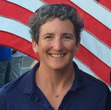Carol Newman Cronin's Blog, page 4
February 27, 2025
Matsya For Sale
I have some bittersweet news: it’s time for Matsya, the Herreshoff Fish/Marlin I’ve owned since 2007, to go to a new home.
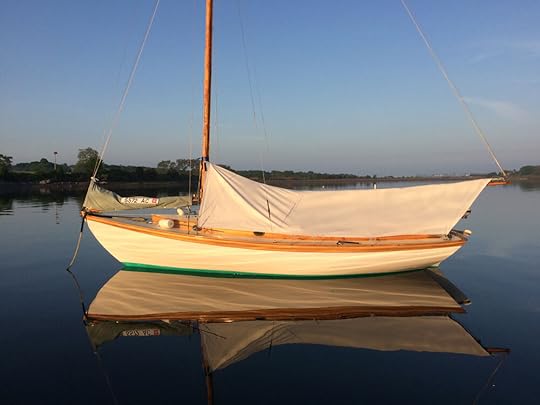
There are many reasons, but the biggest is this: there are only so many hours in any Rhode Island summer, and for the past several years, my priority has been wingfoiling. While I still very much appreciate the tranquility and joy of an afternoon or evening spent tootling around West Passage, especially with friends, this lovely boat deserves a more devoted steward. Best to pass her along to a new owner before her next season.
For those interested in her history, she is one of the only surviving Herreshoff Marlins (a sub-species of the Fish Class, not to be confused with the fiberglass Marlin). She was completely rebuilt in the 1990s for the previous owner, and she’s in excellent condition with lots of new gear.
There’s an ad up on the Worldwide Boat Show, so head on over for more detail. And if you’ve always wanted to own a classic, please get in touch—because this is a great opportunity. She’s a joy to sail, as you can see from the video that Paul put together (you may have to scroll down a bit).
Got memories of sailing on a classic, or always wanted to but never got the chance? Share your thoughts in the comments below, or send me an email. I read every single one, with gratitude.
Thanks for being here, and see you next week.
The post Matsya For Sale appeared first on Carol Newman Cronin.
February 20, 2025
4 Different Decades of the Verb “To Freelance”
Since I first started writing for hire in the late 1980s, I’ve seen almost constant change in the perceptions of self-employment. Today I’m taking a look back at how the word “freelance” has evolved—as well as what remains constant—through the admittedly biased lens of my own memories.
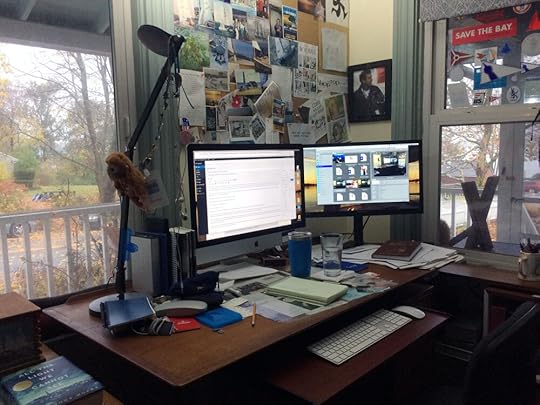 1980s: “A Dirty Word”
1980s: “A Dirty Word”My original business cards proclaimed me to be a “freelance writer.” When I proudly handed one to a seemingly wise expert, she told me not to include that evil word on a business card, ever again; “You’ll never make any money if you call yourself a freelancer.”
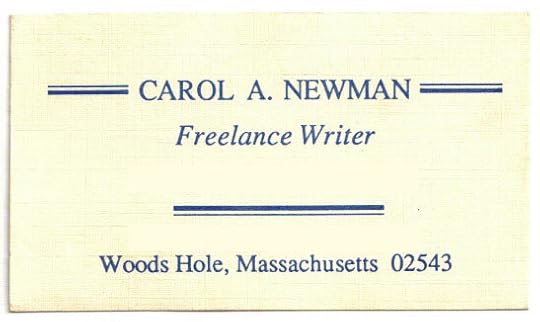
I dutifully removed the word from my next round of cards—an example of how willingly I lapped up advice in those early days. And, for better or worse, I’ve never used it since.
If that seemingly wise woman was as memorable as this piece of advice, I’d track her down and tell her that business cards themselves are almost extinct—along with printed letters and SASEs and resumés. I’d also pass along the lesson I’ve since learned: the only words that really matter lie within the stories themselves.
1990s: “Everyone Should”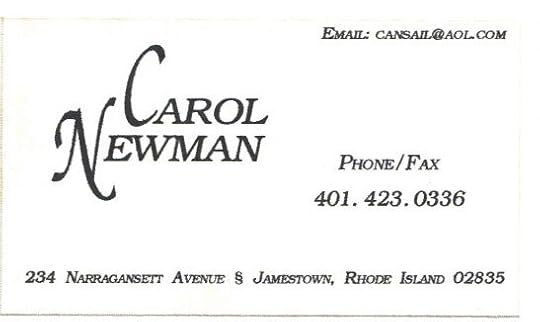
As the corporate security blanket developed more holes than a shroud adjuster, a school of thought developed: former employees could find their joy as freelancers! (We were still distrusted as a species, at least outside of journalism.) I thought it was a great plan, until one laid-off friend told me that she LIKED and NEEDED the structure of going into an office every day. Lesson: What’s best for me doesn’t necessarily work for everyone else.
2000s: “Content Creator”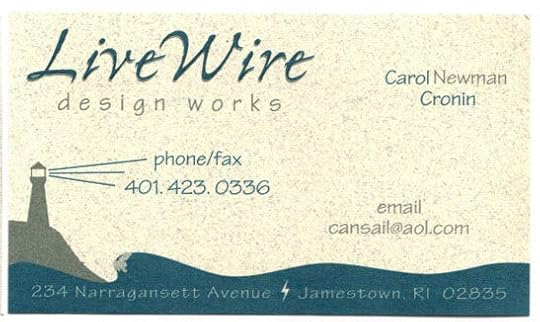
The milennium brought on an onslaught of new and exciting tools. Even after I ditched first the dedicated fax and then the primary phone line, I held onto acres of phone cable—because it seemed impossible that this key member of my business team wouldn’t ever be needed again. It was around this time that I first heard the term “content creator,” and realized it fit my skills perfectly.
2010s: “ISO Health Insurance”In 2012, I signed on as an employee—mostly to cover what had ballooned into my largest single-line business expense. It was only after returning to freelancing in 2015 that I truly appreciated the best rewards of those years: working with other marine industry freelancers, and learning about specialties beyond sailing. Biggest lesson: how to write on a weekly schedule—the very discipline needed for this blog.
2020s: “Most Nimble”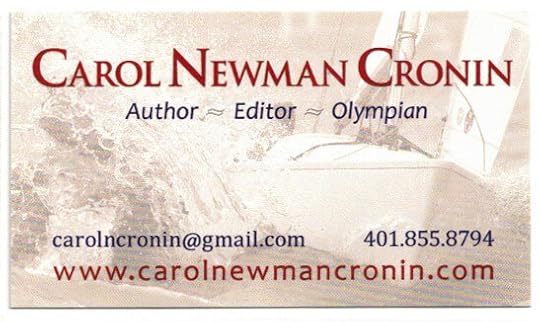
Even before Work From Home became WFH, companies began to appreciate freelancers; we only expect to be paid after we complete a job, and we can quickly adapt as needs change. These days, we’re accepted as valued members of the work force—at least within the marine industry.
(Just in case you’re wondering, I did finally part with all that phone cable.)
What Remains the SameOver four decades, even as the word “freelance” has morphed and shifted, several writerly “truths” remain exactly the same. First, we all need a way to fill and then refill the idea well. Second, we must deliver clean copy, on time, about a relevant and relatable topic.
Last but certainly not least, freelance writers like me would not have the jobs we love without an audience. As one long-time consumer of my words told me recently; “As long as you keep writing, I’ll keep reading.” So whether you prefer this blog, my magazine stories, or my books, Thank YOU for following me on this incredible word journey!
Got a memory from the past four decades that highlights how much the world has changed? Share it in the comments below, or send me an email. And even if you don’t have anything to add, I’m so grateful you’re here.
Related PostsFreelance Juggling: All in a Day’s Work
Freelancers: Feral or Friendly?
Freelancing: Invest in Yourself
12 Months, 12 Freelancing Lessons
Wanted: Background, Context, and a Definition of Done
Time Capsule: A Letter from 1995
The post 4 Different Decades of the Verb “To Freelance” appeared first on Carol Newman Cronin.
February 13, 2025
Snipe Mom Wisdom: What Really Matters After 3.5 Decades
Halfway through a group dinner at my first regatta of 2025, I realized: I’ve been sailing Snipes on Miami’s Biscayne Bay for 34 years.
Though on my best days I feel almost as fresh and eager as a 20-something newbie crew, I’m now seen by the younger generation as one of their many “Snipe moms.” We often make suggestions based on our own hard-earned wisdom, just as the previous generation did to us. And just like we did, “the kids” mostly ignore us. Which is actually fine, because a secondhand lesson will never stick as well as what they learn from their own mistakes.
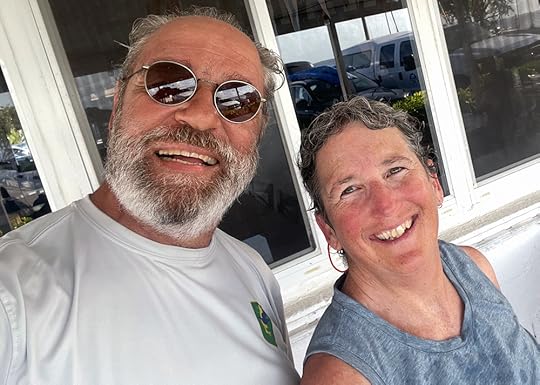 Almost 40 years after college, Brazilian Luis Borba and I reconnected at a few Snipe regattas. We lost him far too soon.
Almost 40 years after college, Brazilian Luis Borba and I reconnected at a few Snipe regattas. We lost him far too soon.I have no idea if my stories will actually prove useful to the newbies—or if I’m just using knowledge-transfer as an excuse to reminisce. But how can I pass up the opportunity to share what it was like when Biscayne Bay had a seabreeze that filled almost every afternoon? When it was hard to locate the low-profile target of Coconut Grove skyline on that salt-caked thirsty sail back to the dock? When, on especially regatta-crazy Saturday nights, sailors outnumbered tourists up at the CocoWalk? (When the Midwinters were in Clearwater, not in Key Largo?)
After so many years of building up both hiking stamina and tactical smarts, I can now see far more clearly what really matters long-term. So here’s a list of what’s changed, and what hasn’t, since my very first Miami Snipe regatta in 1991.
Still the SameDriving to a regatta is far more exciting than driving home.There’s no substitute for proper preparation—both boat and body. Most races are won long before anyone leaves the dock. Competitive camaraderie is a wonderful path to friendship—with people from all over the world. What’s ChangedI no longer do a 26-hour drive non-stop (especially solo). Older boats and bodies need a little more luck to win.I am far less greedy for tossed scraps of Snipe-specific tuning trends. In addition to those actually racing, I also spot the “ghosts” of sailors who (for one reason or another) are no longer with us.After racing, I still try to soak up any shared lessons from the sailors who best figured out that day… but I now understand that more training will not necessarily transfer those winning skills to my own racing toolbox. I can also see that many so-called “hot tips” will eventually re-evolve back to what they were before, just like skirt lengths.
Whether or not they’re listening to their Snipe moms, I’m so glad the enduring attraction of this quirky 15 foot boat is making it possible for yet another generation to make their own mistakes. Yes, the communications and the skyline and the details are all different. But as one of those lucky enough to still be Snipe sailing after three and a half decades, I am more intrigued by the timelessness of my top priorities: what we can do better, how to best support each other, and where we should all go for dinner.
For a more “middle aged” perspective, read My Family of Snipe
The post Snipe Mom Wisdom: What Really Matters After 3.5 Decades appeared first on Carol Newman Cronin.
February 6, 2025
Stepping Out on My Fiction—Again
After reading my 2024 holiday story The Boat Beggars, many of you reached out (thank you!) and asked, directly or otherwise, about the next novel. So today, I’m going to attempt to explain why it’s taking so damn long.
Like old friends, all the characters in Ferry to Cooperation Island didn’t stop making mistakes and plans and helping each other just because the first book was published. When another “outsider” showed up, I thought the sequel would come together relatively quickly. But even after many years of work, I still haven’t managed to weed out all the unnecessary (but very fun) details that distract from what many writers and editors call “the beam of the story.”
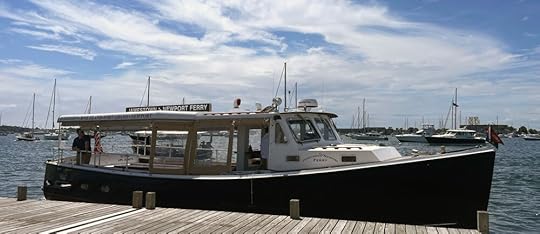
Last January, I hired an editor—and wondered if it was too soon. It probably would’ve been perfect timing, if not for the continued distractions of another very fun project; creating a book that tells the history of a boat called Hound. Three years ago, I expressed surprise at how all-consuming 100 Years of Gold Stars became: “Though non-fiction, it’s still a book only I could write; right at the intersection of my weird collection of skills, Where Books Meet Boats.” (Read more in The Gold Star of Writing Projects.) Now the Hound book is taking up the space in my brain usually reserved for fiction; once again, stepping out on my next novel to write non-fiction!
The Hound book will go to press in the fall, and it’s going to be my best yet… but (just as a wise writing friend predicted, more than two years ago) I simply can’t give the folks on Cooperation Island the attention they deserve until AFTER this project is completed. So for now, all I can say is: sit tight, dear readers! And if you haven’t yet read all of my books (fiction or otherwise), drop me an email and mention this blog for a special deal.
Meanwhile, thanks again for reaching out. Having an audience keeps me going, and I’ll try to do a better job of keeping you updated… even just to admit that it’s already taken too damned long.
Got a project you’ve been working on that isn’t coming together as fast as you’d like? I’d love to hear about it, and I read every single comment and email with gratitude. Thanks for being here, and see you next week.
The post Stepping Out on My Fiction—Again appeared first on Carol Newman Cronin.
January 30, 2025
Gerhard Gilgenast: Curiosity Can Be Contagious
One of the best parts about my writing life is learning more about personalities that intrigue me, even if what I dig up will never make it into an actual book or article. I could regale you with various fictional characters I’ve edited off Cooperation Island… but instead I’m going to share a recent deep dive into an actual human: someone who played a long-forgotten but key role in building the yacht that would become Hound.
I first came to know this man through what maritime historian Maynard Bray calls the “smoking letters:” two years of transatlantic correspondence between designer, owner, and builder. As the first chapter of The Heart of Hound says, the letters “reveal how the project, complicated by both twentieth-century communication delays and an endless quest for perfection, might have never made it to any starting line at all.”
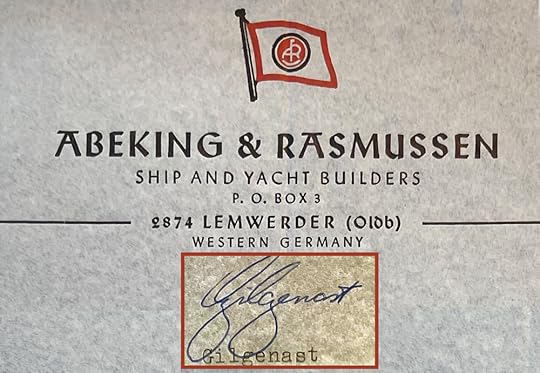 One Notable Name
One Notable NameThe “smoking”-est letters and cables, those threatening work stoppages and launching delay, were all signed by someone named “Gilgenast” at Abeking & Rasmussen (A&R). the German builder. An online search for a first name or title led nowhere—and his bit part in Hound’s history couldn’t justify even that much curiosity.
it wasn’t until an equally curious colleague found a listing in the Encyclopedia of Yacht Designers that I learned his first name: Gerhard. Intrigued, I tracked down a local copy of the Encyclopedia—and discovered that Herr Gilgenast worked at two US shipyards that would both play a large part in Hound’s early history. More significantly, the guy was not just a disgruntled draftsman; he was an internationally respected yacht designer who first developed his skills in a few equally well-respected US design offices. (If you’re curious now too, here’s more detail.)
Lessons LearnedThis ridiculously delicious rabbit-hole was an excellent reminder that online research definitely has its limits. And discovering The Encyclopedia of Yacht Designers—a rich source of information that I didn’t know existed—also motivates me to keep producing carefully researched books. Unlike websites, they will serve “forever” as a frozen time capsule of historic detail; even after they go out of style, and even if they fail to attract a suitably impressive number of eyeballs.
There’s also the simple joy of following my curiosity. Not every detail has to make it into an actual book or article; it can be enough all on its own, especially when it brings others joy as well. What about you—has your curiosity ever proved contagious? Share your thoughts in the comments below, or send me an email. I read every single one, with gratitude.
Thanks for being here!
The post Gerhard Gilgenast: Curiosity Can Be Contagious appeared first on Carol Newman Cronin.
January 23, 2025
Book Review: West with Giraffes
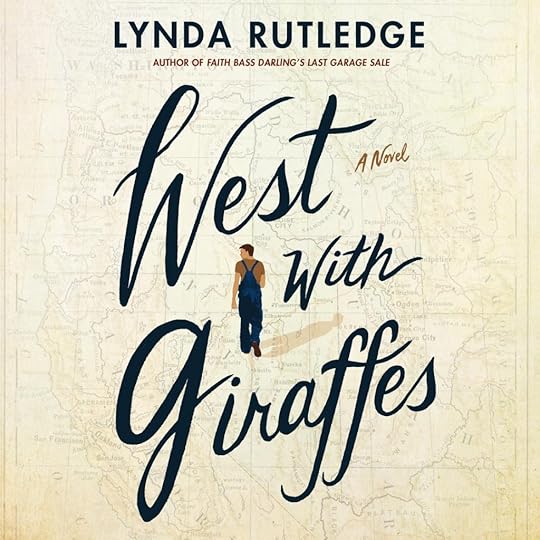
I’m starting off my 2025 Book Reviews with an audiobook set in 2025! Usually it doesn’t seem important whether I consumed a book I’m reviewing with ears or eyes, but in this case the narrator’s voice added both tension and depth. Afterward I looked him up, because Danny Campbell manages to sound so much like a 105-year-old Woodrow Wilson “Woody” Nickel that I found myself hoping neither—Danny, or Woody—would keel over before finishing.
The novel, based on actual events, takes us back to September 1938 when two giraffes are off-loaded in New York, having somehow survived a 50-plus day Atlantic crossing—and the Great Hurricane. The teenaged Woody can’t take his eyes off the majestic creatures, which are headed by truck for the San Diego Zoo. He has recently lost everything—again—to the storm, so he signs on as the rig’s driver and heads west, toward the sunny promise of California.
What It’s AboutWhile the tale covers the challenges of crossing a Depression-era country towing two very tall passengers, the larger theme is animal grace and how it can change and improve humans. To enrich what could’ve been a rather dull travelogue, author and former travel writer Lynda Rutledge also overlaid a fictional love story—and wove in many imagined details well beyond the scope of various newspaper stories and memoirs.
When I read this book, I didn’t know anything about the giraffes and their history; it’s only after I finished, not wanting to let them go, that I dug into what was actually “true” and what only took place between my ears. The wonderful thing about fiction is that it can bring to life stories we would never hear otherwise… and the writing didn’t show any gaps between what was gleaned from a newspaper and what came solely from Rutledge’s imagination.
I always like to include what I didn’t like about a book, but in this case I can’t think of any criticism at all. I’d recommend it to everyone who loves animals, especially those who enjoy cross-country adventures. IMHO, it’s even richer and more engrossing than Amor Towles’ far more popular The Lincoln Highway.
And even though this might be considered a spoiler, I will tell you: both Danny Campbell and Woody Nickel do manage to finish the story. Only then do we find out who the very specific audience is, identified only as “you”—which makes for the most satisfying ending I’ve read in many years.
Authorial VoiceRutledge has written two novels (as well as a history of the San Diego Zoo). After digging into her website, I’m looking forward to reading her latest, Mockingbird Summer. I especially liked this answer about her unique voice:
I’m told my style is “humorously serious.” I like that. Robert Frost nailed what a good piece of writing should do, saying it “begins in delight and ends in wisdom.” A good story, the kind that stays with you and gives you food for thought, packs a velvet punch––so it must have some gravitas to it, but it should be delivered lightly and with a dash of joy. That’s what I’m aiming for in all my novels, the past ones and the ones still to come.” Read more on LyndaRutledge.com
The only reason I stumbled onto West with Giraffes is because of libro.fm’s easy-to-search library. If you too enjoy reading-listening to full-length books while your hands are busy with other tasks, their fee includes a monthly book credit—and a portion goes to the independent bookstore of your choice. (No portion goes to me; I just like their service.)
Got a book you’ve loved that hasn’t received as much attention as you think it should? Share it in the comments below, or send me an email. I read every single one, with gratitude.
PS There’s an excellent summary of how fact and fiction intersect in West with Giraffes on Zoo Walks Through History.
Read my other book reviewsThe post Book Review: West with Giraffes appeared first on Carol Newman Cronin.
January 16, 2025
Small World Wonder: Watching the Vendée Globe Race
This past week, I’ve spent way too much of what should be writing time watching videos of other people sailing—and thinking about how small the world seems. Every four years, the Vendée Globe Race (a solo, non-stop, unassisted lap of the planet) starts in early November from the west coast of France. This year, they’re providing daily briefings in English—so I’ve been even more hooked than four years ago, when I wrote The Sailing is the Easy Part.
I’ll leave it to those who better understand offshore routing and sleep patterns and how to fix whatever breaks on these incredible boats to parse out all the lessons and requirements for success—other than sheer perseverence, which all 40 starters have. What I want to focus on here is how small our planet feels when watching this race. Here are three key moments, with gratitude for the excellent graphics and weather overlays available on the website.

1. On Christmas Day, when the leaders were rounding Cape Horn, the fleet stretched all the way back to Australia: like a carbon rubber band, stretching around 180 degrees of longitude.

2. A few days ago, as the leaders charged up the North Atlantic, the weather map showed a significant low spinning toward them from the west—the same winter storm that had just whipped Rhode Island with days of gale force winds.
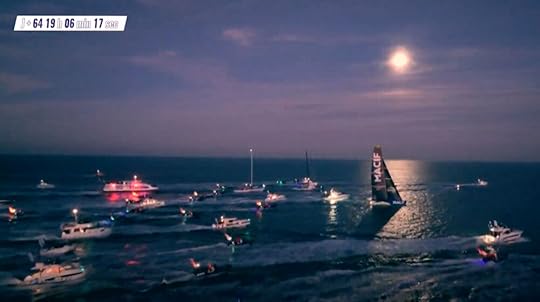
3. Earlier this week, winner Charlie Dalin crossed the finish line at sunrise—watched over by the same full moon I admired just a few hours later.
And here’s the most small-world thought of all: all around the globe, others have undoubtedly experienced similar key moments.
No matter how cold the weather or how early the arrival, a huge crowd comes out to welcome each Vendée finisher—and they will continue to do so until the last boat finishes (currently estimated for early March). Meanwhile, there will be many more moments of awe for me: about our interconnectedness, and about the raw human achievement of completing a nonstop solo sailing lap of our planet, no matter how small it seems from the couch.
Have you also found yourself distracted this week? Share your thoughts in the comments below, or send me an email. Thanks for being here!
The post Small World Wonder: Watching the Vendée Globe Race appeared first on Carol Newman Cronin.
Yacht Designer with a Wooden Toolbox
Quoted text comes from The Encyclopedia of Yacht Designers, by Lucia del Sol Knight and Daniel Bruce MacNaughton, copyright 2006. The section on Gerhard Gilgenast begins on page 179 and was written by Jack A. Somer.
Gerhard Gilgenast was born in 1938, in a town that now belongs to Poland. At the end of World War II, his family fled to Germany and settled about 80 miles west of Lemwerder, home to the famous boatbuilding firm Abeking & Rasmussen (A&R). In the 1950s, the teenager apprenticed there, and the toolbox he bought is identified by his biographer as one of his unique strengths as a naval architect—along with a “decidedly artistic, often opinionated temperament.”
 Margaux Rose, now named Shandor, was a Gilgenast design for Fiat’s Gianni Agnelli. Her 1986 launching featured a hot air balloon rising from the boat’s helicopter pad.
Margaux Rose, now named Shandor, was a Gilgenast design for Fiat’s Gianni Agnelli. Her 1986 launching featured a hot air balloon rising from the boat’s helicopter pad.After the apprenticeship ended, our hero (“ever a restless soul”) carried that toolbox onto a freighter bound for New York. In 1960 he went back to Germany for a naval architecture degree; Somer says that he was “an original, somewhat aesthetic thinker… [but] undeniably a rather lazy student.” After school, he returned to the US and worked for several well-known yacht designers: Bill Tripp, Phil Rhodes, and Sparkman & Stephens.
According to Somer, it was 1969 when Gilgenast returned to A&R as chief technical designer—the year Hound was transformed from Nielsen’s detailed drawings into aluminum. All that opinionated letter-writing that brought him to my attention probably didn’t play much of a part in his path to fame; he is remembered for “formulating a new motoryacht type ultimately to be characterized by its fluid lines, efficient propulsion, thoroughly analyzed structure, high speed, low noise, and long range.”
Prominent Gilgenast designs include two yachts built for the Aga Khan, as well as exterior work on the very well-known Octopussy. Though I don’t share his taste for large motor vessels, the yacht brokers of today still drop his name as a selling point, more than thirty years after his death.
Curious why I wrote down this history of a man long-lost to time? Here’s the explanation.
The post Yacht Designer with a Wooden Toolbox appeared first on Carol Newman Cronin.
January 9, 2025
First an OOPs, Then a New Edition
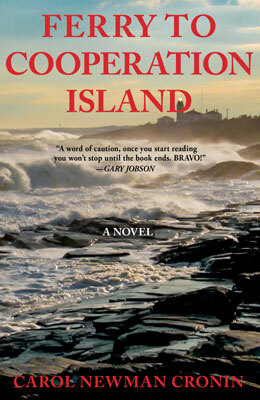
I never thought I’d say this: my fourth novel went Out Of Print last August. All that term needs is one tiny S to make it look like a very large mistake (OOPs).
But actually, it’s turned into a positive step forward—because all four novels are now back within my own control.
Which brings me to what I really want to share: a second edition of Ferry to Cooperation Island that is, I promise, even better than the original. For one thing, this updated version does not have a typo on the very last page. (Did you know that despite does not actually have a R in it?)
Also, I’ve dropped the price to $4.99—something I couldn’t have done before.
If you’re interested in the why and how behind this transition, read on. If not, hop over and pick up your new and improved copy of FERRY. I guarantee you’ll find it almost as fresh and new as 2025.
What sparked this?For more years than I care to admit, my biggest writing goal was to sign with an agent who could help me find a publisher. I achieved that in 2018, and Ferry to Cooperation Island came out in 2020. Once the publisher sold out its first print run—to me, a mark of success—it moved to Print on Demand (POD). It wasn’t until I received the next royalty statement that I realized: it was now costing me money every time someone bought a paper copy of the book online! Yup, you read that right; my royalty rate was a few cents shy of what they were charging me per newly minted copy. Now I’ve never expected to get rich writing novels, but I sure didn’t expect to actually lose money on each sale.
The only way to stop the bleeding was to reclaim my rights—which sent that first edition of FERRY officially “OOP.” Which brings us to
Why publish a second edition?
Just as a mother, they say, is only as happy as her least-happiest child, an author is only as visible as her least-available book. I couldn’t bear the thought of my most recent novel being an OOPs, so I decided to publish a new ebook version. And, after reading through the original again, I found a few spots that could be smoothed out with a bit of additional editing. I also finally spotted that ridiculous typo—which sent me running back to check the very last page of the paperback. Sure enough, there it was: desprite his worry. I who pride myself on clean copy hadn’t spotted it in multiple rounds of edits, and neither had any of the other professionals (or readers)!
I didn’t own the image used on the first edition, so I had to create a new cover. Paul graciously shared one of his wonderful rocky lighthouse photos, and once I was happy with the entire package, I hit “publish.” Now Ferry to Cooperation Island is back out in the world (OITW?), new and improved, ready once more for readers to enjoy.
Please ClickSince I uploaded the new version, I’ve waited in vain for the web crawlers to update—but I’m guessing until the new title receives more clicks than the old one, that won’t happen. So, even if you don’t want or need a(nother) copy of FERRY, please take a moment to click here. This author thanks you!
I still have a few paperbacks in stock, so if you would like one send me an email. Meanwhile, thanks to all of you for reading my books and blogs and articles! Your support keeps me going, especially back in the dark days of August when I was considered an OOPs by the wacky world of publishing.
The post First an OOPs, Then a New Edition appeared first on Carol Newman Cronin.
January 2, 2025
What We Learned from the Women’s America’s Cup
Happy 2025, all!
Way back in October of what’s now last year, there was a groundbreaking event that didn’t receive a lot of notice: the first-ever Puig Women’s America’s Cup. I was totally hooked on watching the racing—though I couldn’t help a little sympathetic cringing for the less experienced teams. Hard enough to learn to sail a foiling AC40 without every mistake telegraphed around the world in real time…
The smoother teams rightly rose to the top of the leaderboard, with the two most polished sailing a winner-take-all final—a thrilling, easy-to-understand format. Afterward, I was curious: what did it take to succeed in this brand-new event? Looking at the scoreboard, it wasn’t just a bigger budget.
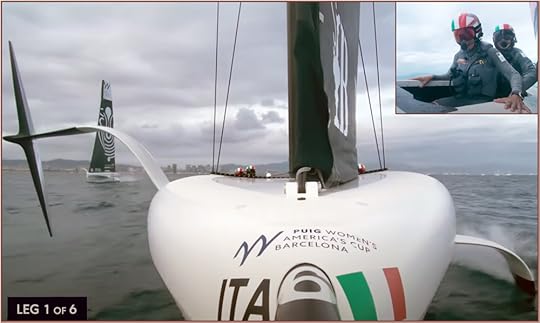
Figuring I wasn’t the only curious bystander, I suggested an interview of the winning skipper to Dave Reed, the editor of Sailing World. I sailed against Giulia Conti at her first Olympics, though it’s so hard now to think of this fast sailor tolerating a lead-mine Yngling. It might be an unwanted record that Guilia finished fifth in the next three Olympics, first in the 470 and then in the 49erFX. Now she’s skippering foiling boats: a career transition, as she puts it, “from a rock painted in the ocean to a boat flying on the water.”
It was great to catch up with Giulia, but Dave suggested I dig a little deeper. (He’s good at that.) So, armed with the door-opening introduction of “I’m writing an article for Sailing World Magazine,” I reached out to the skippers of American Magic and Barcelona’s own Team BCN—and gained far more perspective from their varied experiences. I also learned that English is far more efficient than Italian!
This first edition certainly opened the door, and all three skippers are optimistic about another Women’s America’s Cup—maybe even coed teams racing for the Auld Mug itself. Whatever happens next, hopefully team budgets will allow for a lot more practice time before the TV cameras go live.
Since this story is somewhat time-sensitive, Dave published it first on Sailing World’s website. For those who prefer a “real” paper version, it will be out in the spring issue—so here’s how to subscribe. And before you go, let me know what you think about this brand-new event—along with any another groundbreaking stories I need to learn more about.
Thanks for being here, and Happy New Year!
Read Women’s America’s Cup Steps Over the Threshold
Previous Sailing World storiesHound in Sailing World: Running with the Pack
Sailing World Cup Miami Update
The post What We Learned from the Women’s America’s Cup appeared first on Carol Newman Cronin.

